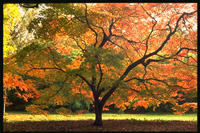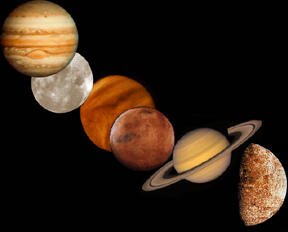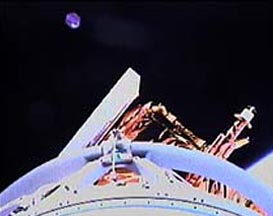Image of FUSE taken by a camera aboard the Delta II rocket. This is the first of its kind.
Click on image for full size
Courtesy of NASA
NASA Launches Satellite to Study Big Bang
News story originally written on June 28, 1999
NASA launched its newest satellite on June 24, 1999 from Cape Canaveral.The Far Ultraviolet Spectroscopic Explorer (FUSE) began its mission aboard the new Delta II rocket, which helped get the satellite into orbit. FUSE will be scientists' latest tool for uncovering the secrets of the Big Bang.
FUSE will use a a special instrument called a spectrograph. It can take light from distant objects and "break it apart". Scientists will study this light to find out what made up the universe when it just began.
Other topics that will be studied using FUSE include star formation and our own galaxy, the Milky Way. FUSE will start taking data in August.
You might also be interested in:

It was another exciting and frustrating year for the space science program. It seemed that every step forward led to one backwards. Either way, NASA led the way to a great century of discovery. Unfortunately,
...more
The Space Shuttle Discovery lifted off from Kennedy Space Center on October 29th at 2:19 p.m. EST. The weather was great as Discovery took 8 1/2 minutes to reach orbit. This was the United States' 123rd
...more
A moon was discovered orbiting the asteroid, Eugenia. This is only the second time in history that a satellite has been seen circling an asteroid. A special mirror allowed scientists to find the moon
...more
Will Russia ever put the service module for the International Space Station in space? NASA officials want an answer from the Russian government. The necessary service module is currently waiting to be
...more
A coronal mass ejection (CME) happened on the Sun early last month. The material that was thrown out from this explosion passed the ACE spacecraft. The SWICS instrument on ACE has produced a new and very
...more
J.S. Maini of the Canadian Forest Service called forests the "heart and lungs of the world." This is because forests filter air and water pollution, absorb carbon dioxide, release oxygen, and maintain
...more
In late April through mid-May 2002, all five naked-eye planets are visible at the same time in the night sky! This is includes Mercury which is generally very hard to see. You won't want to miss this!
...more















